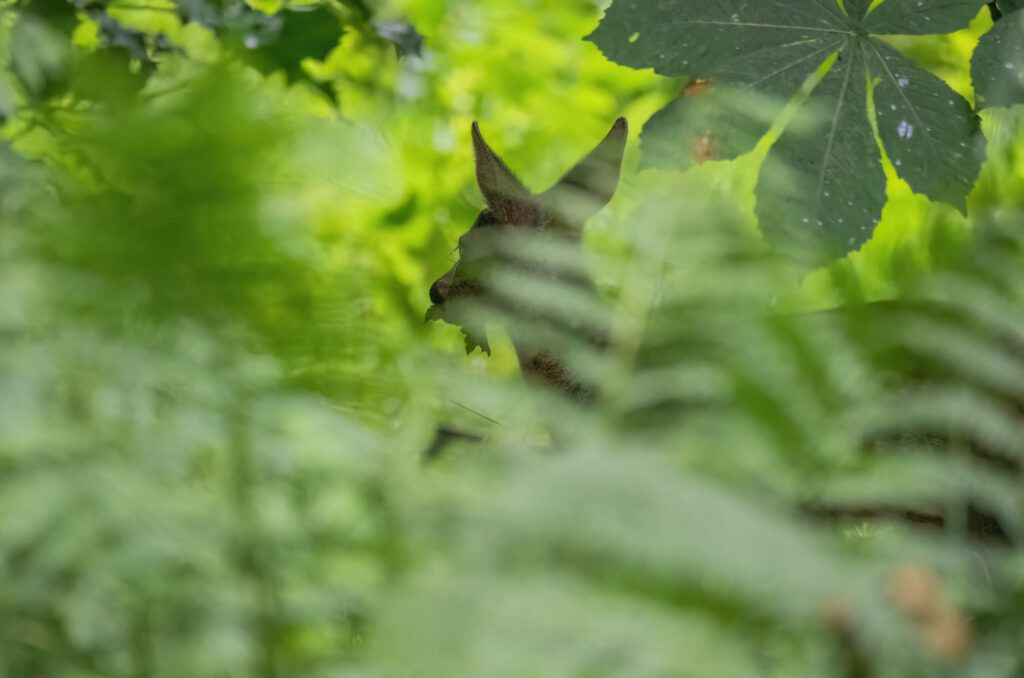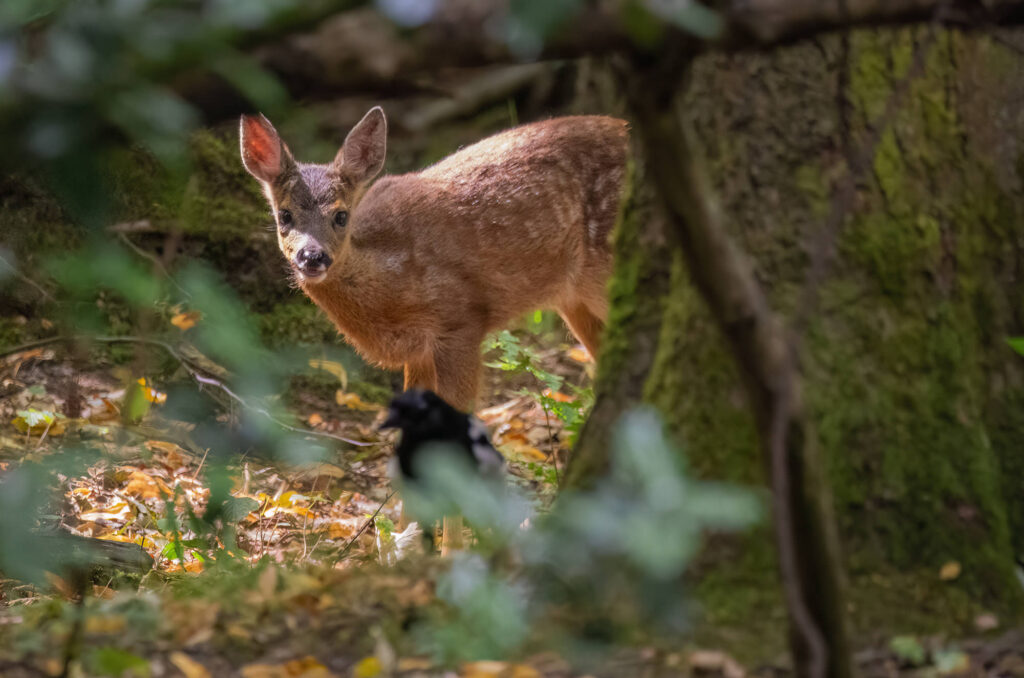The moistened soil was my friend. The dappled light was not. Stepping carefully through the woods I managed to remain mostly silent on the soft ground. But it’s not just noise that will disturb my subject. Roe deer are great at spotting movement. So, while they stay perfectly still, they can watch your approach, judging whether they need to run.
And that’s exactly what happened. My poor eyesight hadn’t spotted the doe partially hidden behind a tree trunk. As I got closer, she started to move away. The huge shifts of light and shadow, as the wind blew the trees around, meant that I didn’t spot that slight movement until she was running. I flushed her and was left cursing myself as her white tail bounced away from me into the field beyond. She didn’t go far, recognising the sound of my voice. Realising I wasn’t a threat after all, she slowed and started to graze but, as far as I was concerned, the damage was done.
As a wildlife photographer, the welfare of my subject is the priority. The last thing I want to do is disturb the roe deer I photograph, and I have a few methods that I use to ensure my presence doesn’t cause them any stress. However, all those techniques – using my voice for recognition, slowing down or changing the direction of my approach, pretending to browse on vegetation, sitting down – rely on me seeing the deer before they see me or before I get too close to them. There have been a few times where I’ve almost literally stumbled across a resting deer and we’ve both jumped out of our skins – an upsetting and frustrating experience. But how could I stop it from happening?
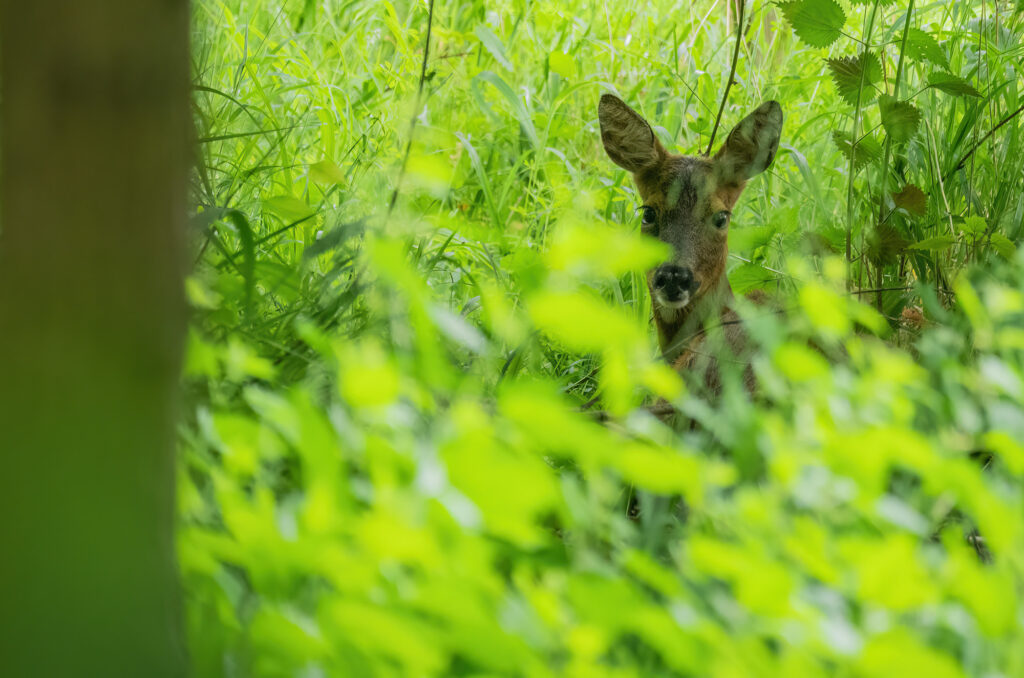
I started to see more articles and adverts mentioning thermal imaging and it piqued my interest. I knew that people tracking and monitoring wildlife used the technology, but I hadn’t considered using it for my photography. However, I had some money saved for new equipment and decided to investigate if it would be worthwhile buying a thermal monocular.
How it works (the technical bit)
Unlike regular cameras that capture images using visible light, thermal imagers create pictures based on heat. Everything around us, including ice, emits thermal energy. The hotter an object is, the more thermal energy it gives off. This energy is known as a “heat signature.”
What makes thermal cameras so useful is their ability to detect even the slightest differences in heat between objects. So, even if two subjects are next to each other, their unique heat signatures will stand out to a thermal sensor. This means you can spot animals in complete darkness or through obstacles like smoke, making it easier to track and photograph wildlife in challenging conditions.
There is a wide variety of thermal imaging devices on the market depending on your requirements. After doing a bit of research, I bought a Pixfra thermal monocular as I wanted something small and lightweight with a good detection range for my budget. I wasn’t planning to capture images and videos using the monocular (although it does both), I just wanted to be able to detect the roe deer, and other wildlife, from a distance. I also thought it might come in handy for spotting people in the woods. As a woman walking alone and carrying a camera, I can feel quite vulnerable and have had a few potential scares previously. I figured that anyone hanging around in the woods would show up on the thermal camera, enabling me to steer clear of a potentially threatening situation.
So, has it worked?
Heat signatures for success
The thermal monocular has honestly been a game-changer for my deer photography. I can now spot my subjects from a good distance, meaning that I can judge my approach and make informed decisions about what sort of images might be possible. This has led to some wonderful encounters, where I have not only been able to capture images of the deer without disturbance but I’ve also been able to make my exit from the area without spooking them. It’s wonderful to know that I’ve not caused them any stress.
The image below was an example of one of these encounters. Ruby was well camouflaged as she moved silently through the thick bracken, pausing occasionally to munch on tree leaves. I spotted her walking through the vegetation from a distance using the thermal monocular. I then moved myself slowly and quietly into a position to capture some images. Before she got too close, I spoke quietly to alert her to my presence. It obviously didn’t bother her, as she came steadily closer until I slowly moved away and left her to it.
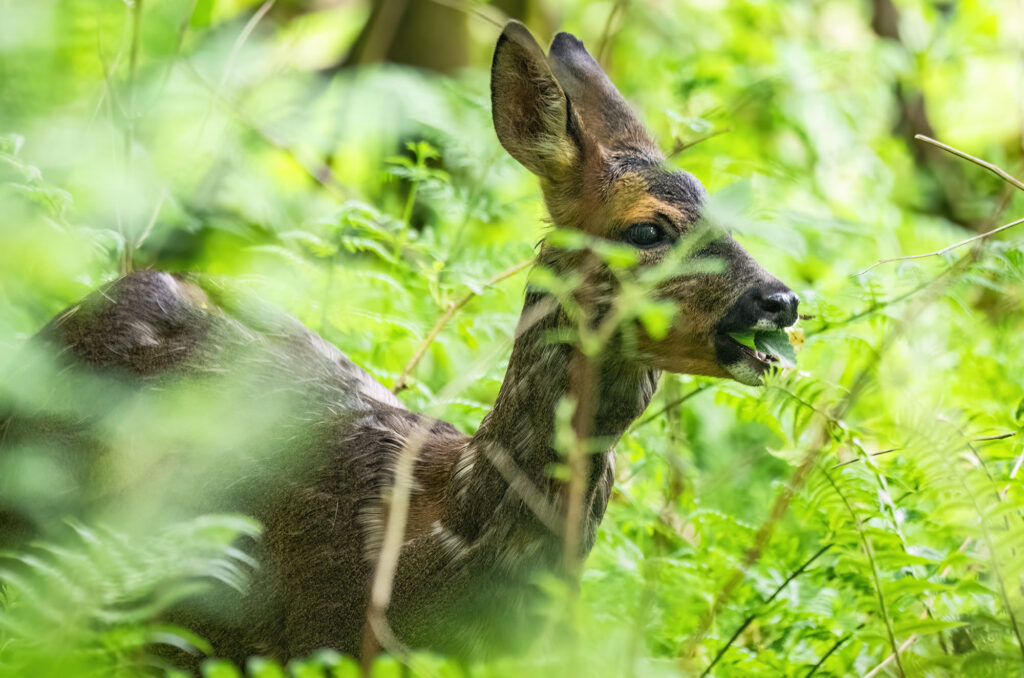
There are limitations to the thermal imagers, and it’s good to be aware of these and how they may affect what you’re trying to achieve. A good example is that they can’t pick up heat signatures through solid objects, like tree trunks, or particularly dense vegetation, such as when a deer is sat still on the ground surrounded by thick cover. This may sound like an obvious point to make but it’s worth noting when you’re photographing wildlife that may remain at least partially obscured. Russet – the buck in the image below – was sitting on the ground and was hidden by a fallen tree. I was able to capture this image because I was walking slowly and quietly when I spotted the heat from the top of his head above the top of the trunk. A thermal imager isn’t a substitute for your fieldcraft – you must use both to get the images you want.
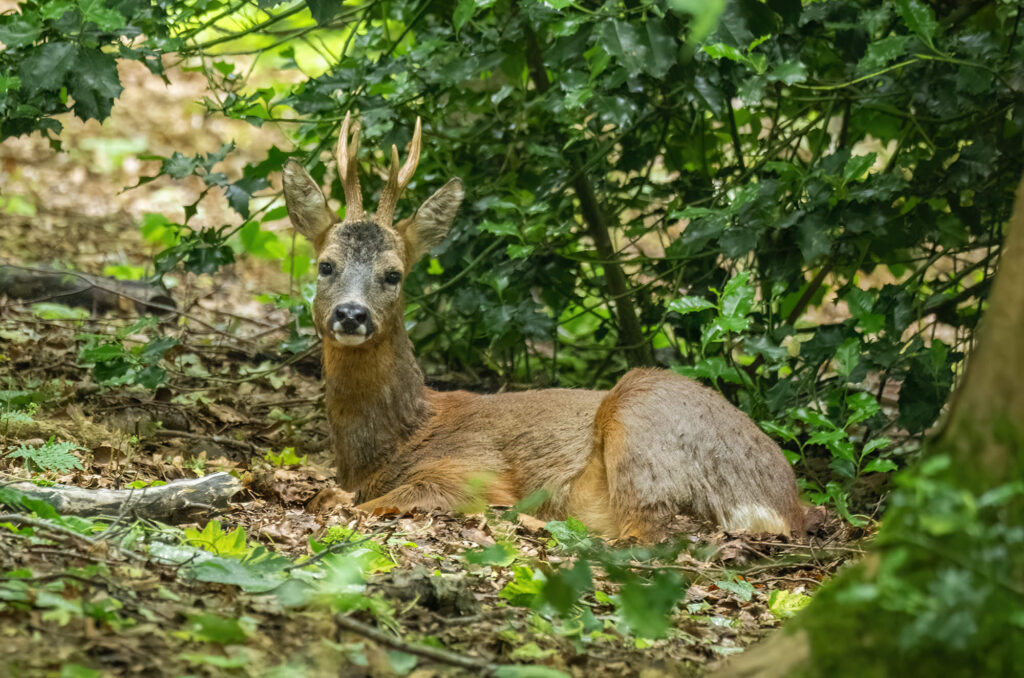
The ultimate example of this coming together followed the discovery that I had roe deer kids on my local patch again after a lack of young last year. It’s vital I avoid disturbing this family and the thermal monocular has already been a huge help. The images below were only made possible because I spotted this baby moving in the long grass with the monocular while I was standing a good distance away. As it moved between the trees, I could follow its progress and stay out of the way, making for some lovely photo opportunities. In fact, it was a highland cow thrashing its horns against a nearby fence which brought an end to this thrilling encounter, not me.
In summary, I’ve found that in the heat of the moment, it’s cool to have such a useful tool.
